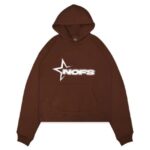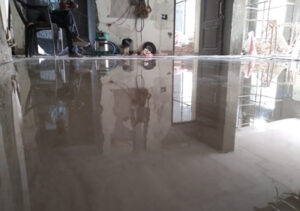In a world increasingly drawn to sustainable fashion and authentic craftsmanship, Tie and Dye Shibori fabric stands as a beautiful reminder of how ancient techniques can evolve while retaining their timeless charm. Shibori, with its distinctive patterns and hand-dyed individuality, is not just a fabric—it is a form of wearable art. Whether used in clothing, accessories, or home décor, Shibori speaks of a heritage steeped in patience, creativity, and craftsmanship.
The Origin of Shibori
Shibori is a centuries-old Japanese resist-dyeing technique, where fabric is tied, stitched, folded, twisted, or compressed before being dipped into dye—traditionally indigo. The areas protected by these binds resist the dye, creating stunning and often unexpected patterns. This technique can be traced back to the 8th century in Japan and has since inspired textile traditions around the world.
In India, Shibori has found a new expression, merging seamlessly with the country’s rich history of handloom and dyeing arts. Indian artisans have adopted the Shibori process with a unique cultural lens, giving it a new identity with regional dyes, fabrics, and motifs, while still honoring its Japanese roots.
The Process of Making Shibori Fabric
Creating Shibori fabric is a labor-intensive process. The fabric—often 100% cotton—is carefully prepared and manipulated using various techniques such as:
-
Kanoko (binding with thread)
-
Arashi (pole-wrapping)
-
Itajime (folding and clamping)
-
Kumo (pleating and binding)
Once the fabric is tied or shaped, it is immersed in dye—commonly natural indigo or eco-friendly chemical dyes. The bound portions remain undyed, forming organic patterns when the ties are removed and the fabric is dried.
The result? A visually arresting textile that reflects both skill and spontaneity, where every piece carries its own individual soul.
Why Shibori Fabric is Special
What makes Tie and Dye Shibori fabric truly special is its unpredictability and individuality. No two pieces ever turn out exactly the same. Each item is shaped by the hands of the artisan and the natural flow of the dye, which makes every design unique. Here’s why it continues to win hearts:
-
Handcrafted Beauty: In an era of mass production, Shibori stands out as a handcrafted luxury.
-
Sustainable and Eco-friendly: Natural fibers and dyes make it a planet-friendly choice.
-
Breathable and Comfortable: Especially when made with cotton, the fabric is light, soft, and perfect for warm climates.
-
Versatile: From apparel to home linens, it works beautifully across styles and uses.
Styling Ideas for Shibori Fabric
1. Apparel
Shibori is a favorite among designers for creating breezy kurtis, summer dresses, sarees, and jackets. The abstract patterns lend a modern edge to ethnic wear, making it suitable for both casual and semi-formal occasions.
2. Accessories
Tote bags, scarves, bandanas, and even face masks made from Shibori fabric bring a pop of artisanal flair to everyday outfits.
3. Home Décor
Shibori’s aesthetic appeal makes it a great fit for homes. Cushion covers, throws, curtains, and table runners in Shibori patterns instantly uplift any room with their rustic and artistic vibe.
Shibori and Conscious Living
The slow, intentional process of Shibori dyeing aligns well with the global movement toward conscious living. Consumers today seek products that are ethically made, environmentally friendly, and rich in heritage. Shibori fabric fits perfectly into this narrative. By choosing Shibori, you’re not just picking a pattern—you’re supporting sustainable practices, rural artisans, and centuries of textile wisdom.
Caring for Shibori Fabric
To preserve the vibrancy and life of your Shibori fabric, gentle care is essential:
-
Hand wash or use a delicate cycle with mild detergent.
-
Dry in the shade to prevent color fading.
-
Avoid harsh chemicals or bleach.
With proper care, Shibori fabrics age gracefully, developing a soft patina that adds to their charm.
Conclusion
Tie and Dye Shibori fabric is more than just a trend—it’s a testament to the enduring power of traditional craft in a modern world. It invites us to slow down, appreciate the handmade, and embrace imperfection as a mark of authenticity. Whether you’re a designer, a home stylist, or simply someone who loves meaningful textiles, Shibori offers a world of creative possibilities and cultural richness. Let every thread tell a story, and every fold reveal a new perspective.
- Tie and Dye Shibori Fabric: Tradition, Artistry, and Contemporary Style
- Tie and Dye Shibori fabric is more than just a trend—it's a testament to the enduring power of traditional craft in a modern world.
- Tie And Dye Shibori Fabric
Related posts:
 Love That Lasts: The Rise of Lab Diamond Wedding Bands mined diamonds
Love That Lasts: The Rise of Lab Diamond Wedding Bands mined diamonds
 Nofs and Nofs Signature Tracksuit Nofs and Nofs Signature Tracksuit
Nofs and Nofs Signature Tracksuit Nofs and Nofs Signature Tracksuit
 Top Ways For Eid ul Adha Gifts and Card Wishes in Pakistan – 2025
Top Ways For Eid ul Adha Gifts and Card Wishes in Pakistan – 2025
 Syna World Redefining the Intersection of Streetwear, Culture, and Identity
Syna World Redefining the Intersection of Streetwear, Culture, and Identity
 Add a bold edge to your look with a Stussy hoodie. It’s not just stylish—it brings raw, unapologetic attitude. From graphic designs to oversized fits and unique colors, it’s the perfect streetwear staple. Pair it with boots, distressed denim, or a leather jacket to stand out effortlessly. This hoodie doesn’t follow trends—it sets them.
Add a bold edge to your look with a Stussy hoodie. It’s not just stylish—it brings raw, unapologetic attitude. From graphic designs to oversized fits and unique colors, it’s the perfect streetwear staple. Pair it with boots, distressed denim, or a leather jacket to stand out effortlessly. This hoodie doesn’t follow trends—it sets them.
 Broken Planet Clothing: Bold Streetwear Styles Crafted for Modern-Day Rebels Who Live by Their Own Rules”
Broken Planet Clothing: Bold Streetwear Styles Crafted for Modern-Day Rebels Who Live by Their Own Rules”
 Discover the Elegance of Cainte Watches & Where to Buy………….
Discover the Elegance of Cainte Watches & Where to Buy………….
 From Classic to Bold: Best Box Braid Styles You’ll Absolutely Love
From Classic to Bold: Best Box Braid Styles You’ll Absolutely Love








